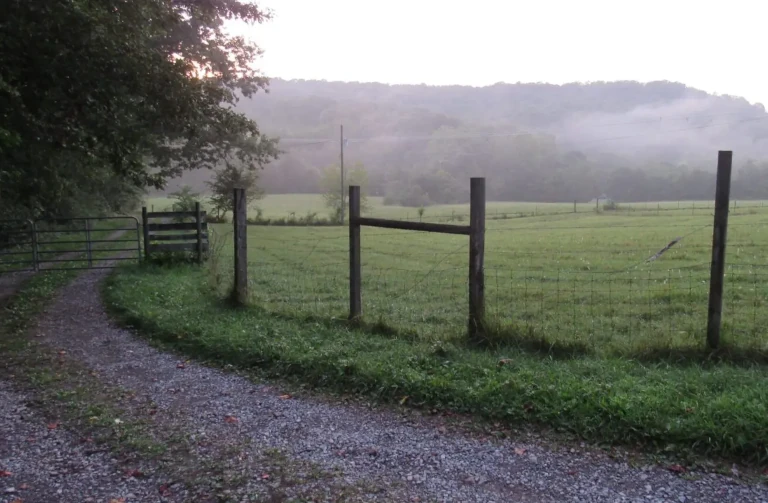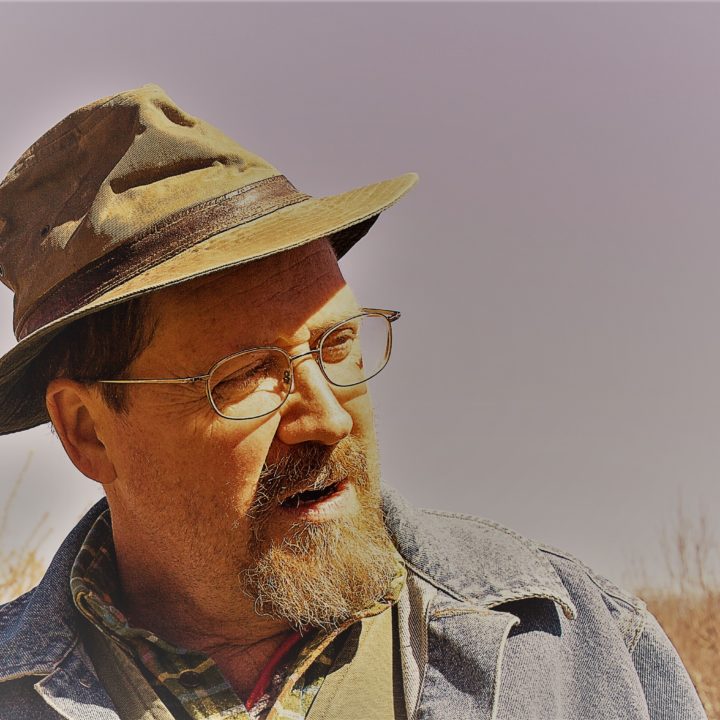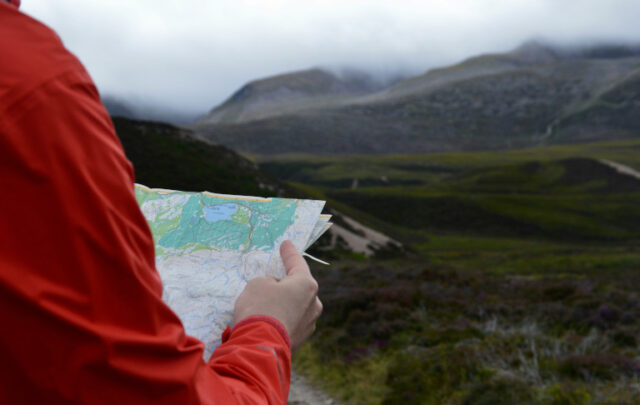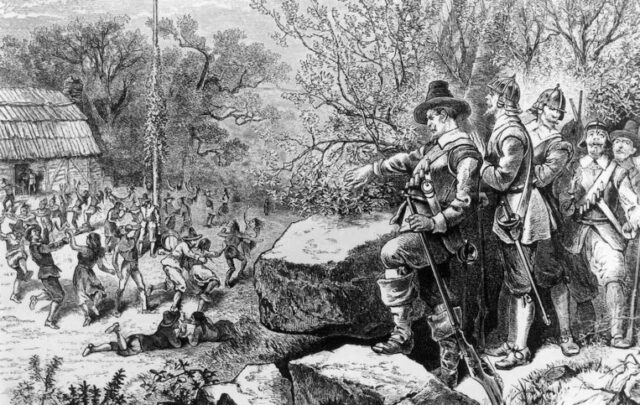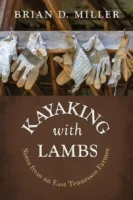 Ed. note: This post is an excerpt from Kayaking with Lambs: Notes from an East Tennessee Farmer by Brian Miller and published by Front Porch Republic Books. Reposted with permission from the publisher.
Ed. note: This post is an excerpt from Kayaking with Lambs: Notes from an East Tennessee Farmer by Brian Miller and published by Front Porch Republic Books. Reposted with permission from the publisher.
Somewhere—the gravel road I grew up on, the wharf I fished from, the woods at the end of the road where we roamed, the edge of the bayou where we fought off pirates to keep them from landing—is no longer. It is now an anywhere of pavement, sidewalks, a Walmart, hotels, casinos, and housing developments. Anywhere is nowhere.
Anywhere is a global assault weapon, firing bullets of convenience and terminal extraction. Even without a smarter-than-you phone, you can find, around each corner, the Starbucks, the McDonald’s, the everywhere of anywhere. All the signs, hovering over expanses of concrete, flashing the conquest-driven desires of the Empire to colonize the somewhere.
It always begins, thus, with the paving of roads. (For we all secretly know, the road in is a road out.) The new road comes to town, and the longtime general store closes down, its population drawn by the seductive pull of the dollar store that opened in the next small town. Then that up-and-coming town gets a check-cashing store, and a rent-to-own, and a doublewide mobile home dealer. In a few years that small town is compacted and consumed, repackaged, and reissued, newly minted as a bedroom community of the anywhere. And its growing population learns the limited joys of spending its days circling the streets of plenty, like water in a drain.
A genius of the Empire is that it was built in bricks of self-loathing. The new construct is a place where the food of one’s people is scorned and a quarter-pounder Thai burger sounds like a possibility, where the inhabitants wander around in such dislocation that their limbs move like invertebrates of the sea, clutching at random unneeded objects in a painful effort to perambulate the Costco shopping aisles.
Ultimately, used up and useless as a boarded-up Kmart that becomes a rock band masquerading as a nondenominational church, the Big Show leaves us, pulls out of town. In its wake is a cratered post-battle landscape, a lonely fortified outpost of colonization on the edge of town that pays low wages and serves up a ghost offering to Anywhere. Pale in its incarnation, the orbiting halogen sun flickers just brightly enough to illuminate our dreams. And inside this opium den of our own making, clutching our pipe, we eagerly inhale the fumes and forget, for a while, that we once lived somewhere. That we were Somewhere.
The sun hovers on the western horizon, an hour left on its time clock, as I walk out the back door and up the wooded lane beyond the pasture gates. The walk is quiet, muffled by deep leaves of countless seasons on this land. My destination, as it often is: a pile of boulders at the base of a half-dozen oaks. I climb onto the largest and use a smaller, four-foot stone as a footrest.
A cairn of rocks six feet tall and twenty feet across lies at the edge of the pasture. Another stands illuminated across the field like a treasure hoard in the curious light of a low sun through a leafless deciduous forest in November. The rocky groupings are seated on the sidelines of all our pastures. They are hard evidence of generations of boys who spent their youth in farm chores, among them picking up the relentlessly erupting rocks and stacking them in mounds.
Behind me lie two oaks felled by storms decades past and decades apart, one now nearly buried in leaf litter, its long cycle of decay almost complete. Ten yards away a limb as big around as my waist dangles forty feet up. Broken off from a parent white oak, it hangs like that sword above us mortals who dare imagine the world as our throne.
The sound of Cedar Fork Creek is barely audible as it channels under the bridge at Possum Trot. Another quarter-mile and it will narrow at the decaying Cook’s Mill, where elder neighbors recall as children hauling mule-driven wagonloads of corn for milling.
A leaf spirals into view, released from a seasonal contract to land at the foot of a massive shagbark hickory. Nearby a deep-rooted sourwood, contorted in the last ice storm, refuses to submit to gravity. At its base a large stone is covered with the debauched remains of a dinner by the resident squirrels, bits of hickory and acorns piled in the center of the table.
A small flock of wild turkeys, feeling safe a couple of days after Thanksgiving, ambles across a lower pasture and enters my wood. On the far side of the road beyond lies the expanse of pastures that marks our neighbor’s cattle farm. From there comes the nervous bawling of dozens of cows as they discover their new home after an auction in a nearby town.
Their disquiet competes with the sound of distant chainsaws, from all points of the compass, chewing on wood. And then, unexpectedly, another intrusion. A neighbor beyond the eastern ridge and half a mile away fires up his ATV to begin what is an early start to his habitual late-night motorized rambles.
Toward the house I can just hear Cindy in the woods as she clangs the lid off a feed barrel. An overeager hog squeals as it hits the single strand of hot wire. I smile. I can check the task of determining if the current is pulsing off my to-do list for the next day.
I rise from my perch and turn toward home—not straight down the lane, but at an angle that leads me into the heart of the woods. I note a likely Charlie Brown Christmas tree along the way. I then pause, as is my wont, at a sentinel white oak. Its circumference is all of fifteen feet, its trunk reaches forty straight feet before the first branches erupt, and the fissures in the bark are two inches deep. I lay hands on it, hoping to receive a blessing of sorts.
Now on the edge of the main woods, I traverse a pig paddock not in use. In the middle is a tall pile of fallen limbs. It provides a sometime shelter for the hogs and, more often, a haven for the red fox that ventures out to make raids on errant hens.
By the time I exit the woods Cindy is trudging up the drive in her beekeeping suit, fresh from checking that her charges are well-fed and secured for the cool night to come.
The sun has set, the light fades, and I enter the house, pleased to call it another good day.


